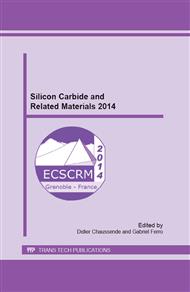p.847
p.851
p.855
p.859
p.863
p.867
p.871
p.875
p.879
Simulations of Interactions between Fast Neutrons and 4H-SiC Detectors
Abstract:
Among particle detectors, particle detectors based on the wide gap semiconductor materials are many used in the nuclear area. For the reliable uses in hard and severe environment, the 4H-SiC is mainly used to the realization of nuclear detector components. This is a part of the topic of the I_SMART European project which proposes to study the nuclear detection of the thermal and fast neutron and gamma rays. In this paper, we deal with the Monte Carlo simulation results of interactions between particles and 4H-SiC detector. In particular, simulation works present the results between fast neutron and 4H-SiC sensor with a comparison between the simulation and experimental results. This article tries to point out the effect of the space charge region depletion, in particular the electric field on the signal response strength.
Info:
Periodical:
Pages:
863-866
Citation:
Online since:
June 2015
Keywords:
Price:
Сopyright:
© 2015 Trans Tech Publications Ltd. All Rights Reserved
Share:
Citation:


